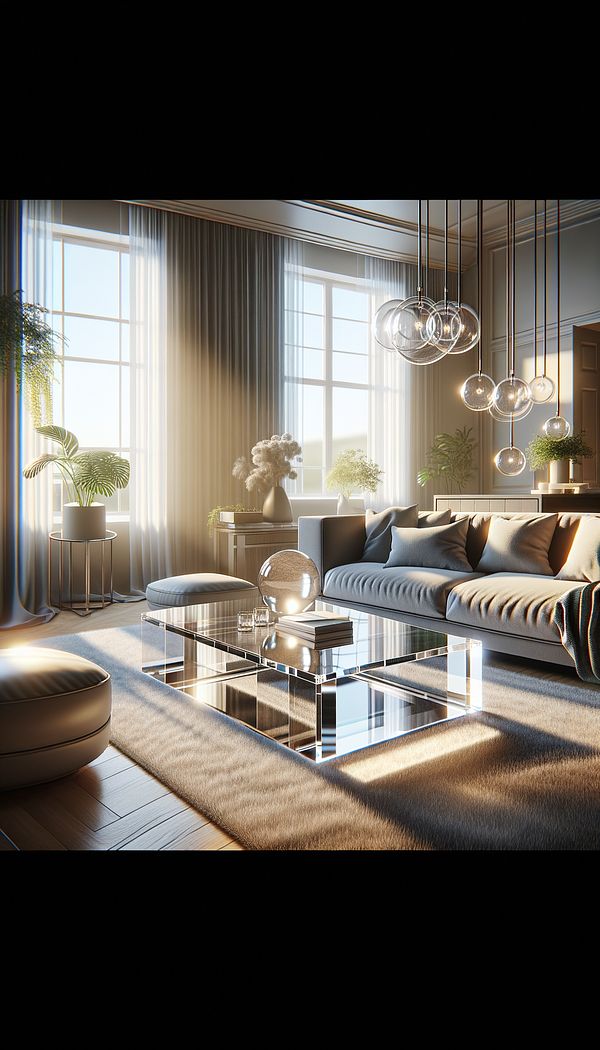What is Acrylic?
Acrylic is a synthetic material known for its durability and versatility in interior design.
Description
Acrylic, a type of plastic made from a derivative of acrylic acid, is a clear, durable, and lightweight material that has made significant inroads in the world of interior design. Its transparency and similarity to glass, coupled with far greater resistance to breakage, make it a favored choice for many applications, including furniture, decorative items, and architectural elements.
One of the main advantages of acrylic is its adaptability. It can be easily molded, cut, and formed into various shapes, allowing designers to create unique, custom pieces that can range from elegant and sophisticated to modern and edgy. Acrylic's ability to blend seamlessly with a wide array of design styles makes it a versatile tool in an interior designer's arsenal.
Despite its strength and durability, acrylic is lighter than glass, which makes it easier to handle and install. This feature is particularly beneficial in large-scale applications, such as room dividers or large wall decorations, where the weight of glass would be prohibitive. Additionally, its transparency can help maintain an open, airy feel in a space, even when used in large quantities.
Usage
Acrylic is used in a variety of interior design contexts. For instance, acrylic furniture, such as chairs and tables, offers a contemporary look while allowing the room’s aesthetic to shine through. Acrylic shelving and room dividers provide practical storage solutions without compromising on style. In decorative elements, acrylic is used to craft items like vases, picture frames, and lamp bases, contributing to a modern and sleek interior.
FAQs
-
Is acrylic durable?
Yes, acrylic is known for its durability, offering greater resistance to impact as compared to glass, which makes it an excellent choice for items that require longevity.
-
Can acrylic replace glass in design elements?
Absolutely, due to its clear appearance and similar aesthetic to glass, along with its enhanced durability, acrylic can effectively replace glass in many design elements such as tables, shelves, and decorative items.
-
How is acrylic handled and cared for in interior design?
Acrylic should be cleaned with a soft, damp cloth and mild detergent. Abrasive cleaners or scouring pads should be avoided as they can scratch the surface. With proper care, acrylic pieces can maintain their clarity and integrity for many years.
Practical Application
When incorporating acrylic into your interior design, consider using it for items where you wish to add a modern touch without overwhelming the space. Its transparency allows for a clutter-free look, making it perfect for small spaces. Remember, acrylic pairs well with both traditional and contemporary design elements, allowing you to experiment with various styles seamlessly.
-
What-NotA what-not is a piece of furniture incorporating open shelves for the display of ornaments.
-
RenaissanceThe Renaissance is a historical period and artistic movement characterized by a revival of interest in classical art, architecture, and knowledge.
-
French PolishingFrench Polishing is a wood finishing technique that produces a very high gloss surface.
-
FiberfillFiberfill is a synthetic polyester material used as stuffing in pillows, cushions, and quilts.
-
Handkerchief TableA handkerchief table is a type of drop-leaf table where the leaves are supported by brackets that swing out, resembling a handkerchief partially unfolded.
